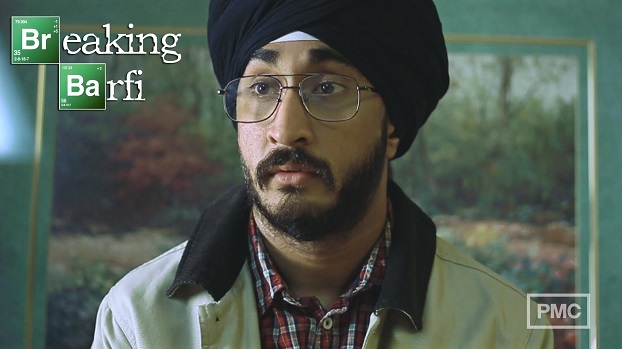 Growing up as an Indian American, food has always been a major topic of discussion in our family. My mom has always enjoyed preparing some of her favorite Punjabi and Gujarati dishes for family and friends. She puts plenty of extra ghee and spices in almost everything she cooks. Not to mention she also has a major sweet tooth for barfi and other Indian desserts.
Growing up as an Indian American, food has always been a major topic of discussion in our family. My mom has always enjoyed preparing some of her favorite Punjabi and Gujarati dishes for family and friends. She puts plenty of extra ghee and spices in almost everything she cooks. Not to mention she also has a major sweet tooth for barfi and other Indian desserts.
When we have family get-togethers, my mom always ends up making samosas, jalebis and other fried foods as appetizers. Everyone races to the dinner table to get a taste. It’s no surprise that in five minutes, all of the sugary and fried goodness ends up disappearing. In all honesty, I’m not big on fried food, and do my best to avoid it at all costs. But fried food and sweets seem to be a staple at every single major South Asian event, wedding and reception I’ve attended.
So is it true? Do South Asians really love their sweets and authentic fried food? Do we really neglect our health in search of that last pakora sitting on the dinner table, ready to be eaten?
A Parody Pokes Fun at Sweets-Loving South Asians
These questions came to mind after a social media buddy of mine posted a link to an interesting parody of America’s favorite AMC drama, Breaking Bad. (Side note: I finally starting binge-watching the series nearly a month and a half ago, and am finally caught up just in time for this Sunday’s heart-stopping finale. #TeamJessePinkman all the way.)
In “Breaking Barfi” by Jasmeet Singh (aka Jus Reign), Waltaar finds out that he’s diagnosed with type 2 diabetes. As an incentive to reverse the effects, he teams up with his cooking partner Jassi, a former student. Together, they end up “cooking” up some healthy mithai, using fat-free, natural ingredients. In doing so, they create some of the best “blue ladoos” on the market.
What do you think of the four-minute parody? Can you live without your favorite sweets and desi fried foods? Is this an accurate representation, or just a stereotype of the South Asian community?
While the parody is not meant to point out the seriousness of the risk for South Asians of cardiovascular disease and diabetes — it does create a space for conversation (while hatin’ on Bollywood for a few seconds).
“Coming This Fall. jk not really. Unless Bollywood picks it up. Unless they have already…which would actually not be surprising at all considering their track record of stealing original ideas from anything successful.”
A Serious Look at South Asian Health Issues
During a special gala hosted by the South Asian Heart Center last year in the San Francisco Bay Area, Dr. Abraham Verghese, a professor of medicine at Stanford University Medical School and author of the bestselling book Cutting for Stone, told India-West that heart disease is a common epidemic in the South Asian community.
Many South Asian volunteers and members of the South Asian Heart Center opened up at the event about losing a loved one to a heart attack and other preventable health issues. Several others shared their personal struggles with unhealthy eating habits, which ultimately lead to heart attacks and other life-changing health problems.
Rita Sharma, co-chair of SAHC’s gala, explained to DiyaTV that her father was a cardiothoracic surgeon, who in an ironic turn of events, ended up dying of a heart attack.
Statistics from the South Asian Heart Center further reveal that many South Asians in the U.S. and India are prone to suffering heart attacks at a younger age.
So, the next time you take a bite out of that vegetable samosa, you might want to think again. Ditch the fried food this Sunday. You don’t want to get a heart attack while watching the last episode of Breaking Bad.
An earlier version of this post appeared on Monica Writes.
Monica Luhar (@monicaluhar) is a freelance journalist, web producer and social media editor in Los Angeles. Her published work has been featured in Southern California Public Radio (89.3 KPCC), India-West, New America Media, OC Weekly, and the Louisiana Weekly, among many others.












